Margaret Clap, better known as Mother Clap, ran a coffee house from 1724 to 1726 in Field Lane, Holborn, Middlesex, a short distance from the City of London. As well as running a molly house, she was heavily involved in the ensuing legal battles after her premises were raided and shut down. While not much is known about her life, she was an important part of the gay subculture of early 18th-century England. At the time sodomy in England was a crime under the Buggery Act 1533, punishable by a fine, imprisonment, or the death penalty. Despite this, particularly in larger cities, private homosexual activity took place. To service these actions there existed locations where men from all classes could find partners or just socialize, called molly houses, "molly" being slang for a gay man at the time. One of the most famous of these was Clap's molly house.
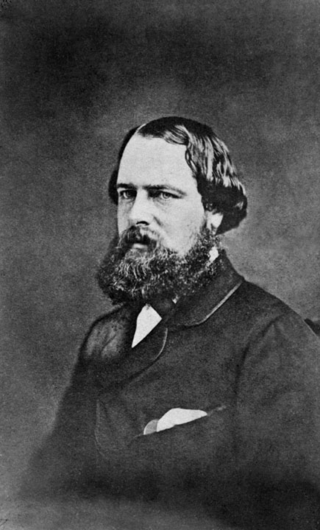
Sir Robert George Wyndham Herbert,, was the first Premier of Queensland, Australia. At 28 years and 181 days of age, he was the youngest person ever to become premier of an Australian state.
Sandro Penna was an Italian poet.

Leszek Józef Serafinowicz was a Polish poet, literary and theater critic, diplomat, and co-founder of the Skamander literary movement and the Polish Institute of Arts and Sciences of America.

Karen-Christine Friele, known as Kim Friele, was a Norwegian gay rights and human rights activist, famous for being the first gay Norwegian to publicly acknowledge and advocate for her sexuality, in June 1965. She acted as the leader for the previously secret organization Forbundet av 1948 between 1966 and 1971, and as its secretary general until 1989.

Arnold Aletrino was a Dutch physician, criminal anthropologist and writer, who published works on homosexuality in Dutch and French. He was a member of the Tachtigers, a group of young and revolutionary Dutch authors, who despised the pious poetry and prose of the mid-nineteenth century Dutch Victorian writers.
The Order of Chaeronea was a secret society for the cultivation of a homosexual moral, ethical, cultural, and spiritual ethos. Founded by George Cecil Ives in 1897, based on his belief that homosexuals would not be accepted openly in society, the Order offered a network for underground communication.
This is a list of notable events in the history of LGBT rights that took place worldwide in the 1950s.

Knut Magnus Enckell was a Finnish symbolist painter. At first, he painted with a subdued palette, but from 1902 onwards, used increasingly bright colors. He was a leading member of the Septem group of colorist painters. In Finland, Enckell is considered to have been a very influential symbolist artist.

Anna Elisabet Weirauch was a German author. Weirauch was an important figure for lesbians in Germany in the early 1900s, as well as for lesbians in the 1970s-1980s following an English translation. Her most well-known work is Der Skorpion, which was a significant piece of lesbian literature which broke from traditional peers in the genre.

Ferdinand Anton Franz Karsch was a German arachnologist, entomologist and anthropologist. He also wrote on human and animal sexual diversity with his mother's maiden name included as FerdinandKarsch-Haack from around 1905.
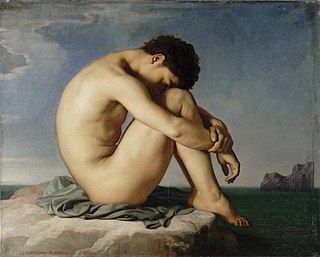
Study (Young Male Nude Seated Beside the Sea) (French: Jeune Homme nu assis au bord de la mer, figure d'étude) is an oil-on-canvas painting by the French artist Hippolyte Flandrin executed between 1835 and 1836. It is held in the Louvre, in Paris, and is the best-known work by the artist.
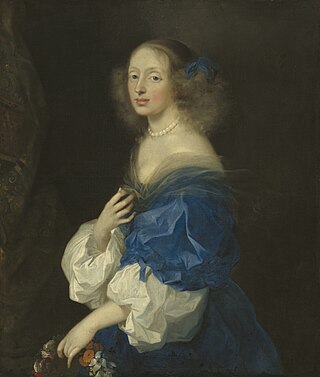
Ebba Larsdotter Sparre was a Swedish lady-in-waiting and noblewoman. She is known as the intimate friend and possible lover of Queen Christina of Sweden.
Ruth Margarete Roellig was a German writer, she is known for documenting Berlin's lesbian club scene of the late 1920s during the Weimar Republic. Additionally she published support of Nazism starting in the 1930s, and she stopped writing after the end of World War II.
Notable events in LGBT history in Norway include:
Vennen was a Danish magazine for gay men published from 1949 to 1974.
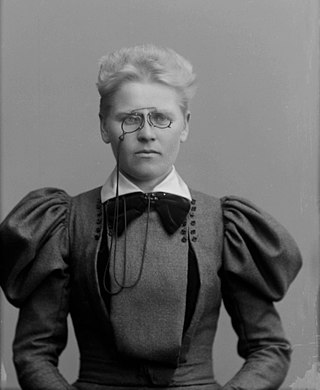
Hilda Maria Käkikoski was a Finnish politician, writer and schoolteacher. She was one of the first nineteen women elected to Finnish parliament in 1907.
Sophus Thalbitzer (1871–1941) was a Danish psychiatrist and medical doctor specializing in manic depressive psychoses. He influenced Danish legislation on homosexuality towards decriminalization in 1933. Thalbitzer never married in his life.

Lucien Sophie Albert Marie von Römer was a Dutch physician, botanist and writer. He often wrote about homosexuality, and argued that it was an innate characteristic. He practiced medicine in the Dutch East Indies in his later life. His views parallel those of psychiatrist Sigmund Freud on this topic.
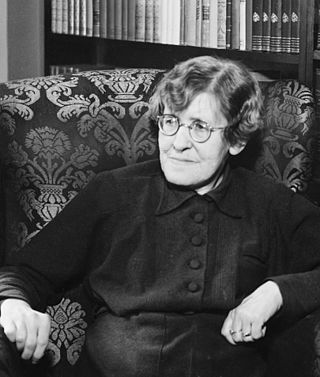
Klara Elisabeth Johanson was a Swedish literary critic and essayist. She was unusually well educated for a woman in her city. She initially wrote for journals and newspapers before she and her partner spent five years curating the correspondence of Fredrika Bremer. She is known for introducing American writers in parallel to publishing her own books.











